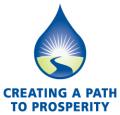Russians Block Products from Around the World, Including U.S. Dairy Shipments
Russians Block Products from Around the World, Including U.S. Dairy Shipments
NMPF was notified on September 28th that Russia’s borders were closed to all commodities from all countries that have not established a list of plants meeting Russian requirements for the commodity being produced in that plant. NMPF is working to gain additional details and to help formulate an approach towards resolution.
There has been considerable Cooperatives Working Together (CWT) activity in Russia this year; shipments that have not yet arrived in Russia are expected to be impacted by this border closure. This issue is of considerable concern for NMPF, whose staff is working closely with U.S. Dairy Export Council and the U.S. government to find the best way to address this new export challenge.
For several years, the U.S. has had no agreed-upon export certificate for dairy products to Russia. The industry and U.S. government officials have been working hard for many years to reach a certificate agreement. Although the U.S. government continued to issue certificates because some ports had continued to allow product in, exporters have been required to acknowledge in writing that they are shipping at their own risk due to these circumstances.
To compound this issue, in January 2009, Russia announced additional requirements for the imports of dairy products. The Russians at that time also began insisting on a U.S. government-approved list of U.S. dairy establishments that will implement all Russian veterinary-sanitary requirements and norms for shipments destined for Russia. Many of these demands differ significantly from U.S. requirements, and are without sound scientific underpinning, making this development a significant challenge even if the U.S. were willing to accept a system that did not recognize the food safety ensured for all dairy products by the existing U.S. inspection system.
This plant list requirement is not unique to U.S. dairy products; it is a requirement for most meat and animal-derived products destined for Russia from around the world. In the U.S., other industries that have complied with this plant list demand (e.g. poultry and pork sectors) have faced arbitrary removal by Russia of plants from this approved plant list, which has wreaked havoc on their industries, and set damaging precedents for what will be tolerated in other export markets.









